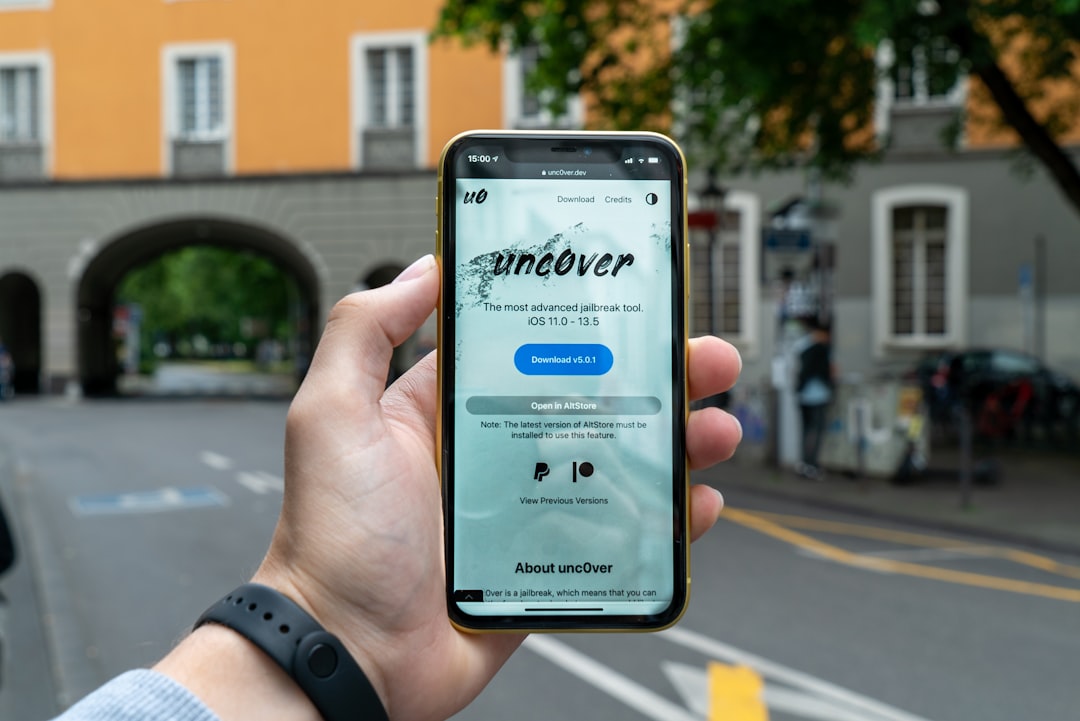In today’s fast-paced world, the demand for productivity tools has surged, and your AI-based productivity app stands at the forefront of this trend.
Your app not only streamlines tasks but also enhances efficiency through intelligent automation.
By leveraging artificial intelligence, you provide users with personalized experiences that adapt to their unique workflows. This adaptability is a significant selling point, as it allows users to save time and focus on what truly matters in their professional and personal lives. Moreover, the value of your app extends beyond mere functionality.
It embodies a solution to common pain points faced by individuals and teams alike. By addressing issues such as time management, task prioritization, and collaboration, your app becomes an indispensable tool in the daily lives of its users. As you delve deeper into understanding this value, consider gathering user feedback and analyzing usage patterns.
This data will not only help you refine your app but also enable you to communicate its benefits more effectively to potential users and investors.
Key Takeaways
- AI-based productivity apps can provide significant value by automating tasks, improving efficiency, and enhancing decision-making processes for users.
- Potential revenue streams for AI-based productivity apps include subscription models, in-app purchases, partnerships, targeted advertising, premium support services, and collaborations.
- Subscription models offer consistent income by providing users with access to premium features, updates, and support for a recurring fee.
- In-app purchases can generate additional revenue by offering users the option to unlock advanced features, tools, or content within the app.
- Partnerships and collaborations with other businesses or platforms can increase revenue by expanding the app’s reach, offering complementary services, or co-marketing opportunities.
Identifying potential revenue streams
Direct Sales Model
One of the most straightforward methods is through direct sales, where users pay a one-time fee to download your app. However, this model may limit your revenue potential, especially if you aim for long-term sustainability.
This approach allows users to experience the value of your app before committing financially, increasing the likelihood of conversion to paid plans.
Enterprise Solutions and Target Markets
Additionally, you might explore enterprise solutions, targeting businesses that require advanced features for team collaboration and productivity tracking. By tailoring your offerings to meet the specific needs of organizations, you can tap into a lucrative market that values efficiency and productivity enhancements.
Maximizing Revenue Potential
Ultimately, the key to maximizing revenue potential lies in understanding your target audience and adapting your revenue streams to meet their needs, whether through direct sales, freemium models, or enterprise solutions.
Leveraging subscription models for consistent income

Subscription models have gained immense popularity in recent years, particularly in the realm of software applications. By adopting a subscription-based approach for your AI-based productivity app, you can create a steady stream of income while fostering long-term relationships with your users. This model allows you to charge users on a recurring basis—monthly or annually—ensuring that you have predictable revenue that can be reinvested into further development and marketing efforts.
One of the key advantages of subscription models is the ability to offer tiered pricing plans. You can create different levels of access based on user needs, providing basic features at a lower price point while reserving advanced functionalities for higher tiers. This flexibility not only caters to a broader audience but also encourages users to upgrade as their needs evolve.
Additionally, by continuously updating your app with new features and improvements, you can enhance user satisfaction and retention, ultimately leading to increased lifetime value for each subscriber.
Implementing in-app purchases for additional features
In-app purchases present another lucrative opportunity for monetizing your AI-based productivity app. This model allows users to access additional features or content within the app itself, providing them with a sense of control over their spending. By offering enhancements such as advanced analytics, personalized coaching, or exclusive integrations with other tools, you can cater to users who are willing to invest more for an enriched experience.
To effectively implement in-app purchases, it’s essential to strike a balance between free and paid content. Users should feel that they are receiving substantial value from the free version while being enticed by the benefits of upgrading. Consider creating limited-time offers or exclusive bundles that encourage users to make purchases without feeling pressured.
Additionally, ensure that the purchasing process is seamless and user-friendly; a complicated payment system can deter potential buyers and diminish overall satisfaction with your app.
Exploring partnerships and collaborations for increased revenue
Strategic partnerships and collaborations can significantly enhance your revenue potential while expanding your reach in the market. By aligning with other companies or platforms that complement your AI-based productivity app, you can tap into new audiences and create mutually beneficial arrangements. For instance, partnering with project management tools or communication platforms can provide integrated solutions that enhance user experience and drive adoption.
When exploring partnerships, consider co-marketing initiatives that allow both parties to leverage each other’s strengths. Joint webinars, content collaborations, or bundled offerings can attract new users while providing existing customers with added value. Additionally, collaborating with influencers or industry experts can help build credibility and trust around your app, further driving user acquisition and retention.
Utilizing targeted advertising to generate income

Understanding Your Audience
The key to successful targeted advertising lies in ensuring that the ads align with the interests and needs of your audience. Irrelevant ads can lead to frustration and disengagement.
Implementing Targeted Advertising
To implement targeted advertising successfully, consider using data analytics to understand user behavior and preferences better. This information will enable you to select ad partners that resonate with your audience while maximizing click-through rates and conversions.
Monetizing Users
Additionally, offering an ad-free experience as part of a premium subscription can incentivize users to upgrade while still allowing you to monetize free users through advertising.
Offering premium support and services for a fee
As your AI-based productivity app gains traction, consider offering premium support and services as an additional revenue stream. Many users are willing to pay for enhanced customer service or personalized assistance when using productivity tools. By providing options such as priority support, one-on-one consultations, or tailored onboarding sessions, you can cater to users who seek a more hands-on approach to maximizing their app experience.
To effectively market these premium services, highlight the benefits they offer in terms of time savings and improved productivity outcomes. Users who invest in premium support are often looking for ways to optimize their workflows further; by demonstrating how your services can facilitate this process, you can create compelling reasons for them to make a purchase.
Analyzing and optimizing monetization strategies for long-term success
Finally, it’s essential to continuously analyze and optimize your monetization strategies for long-term success. The digital landscape is ever-evolving, and what works today may not be as effective tomorrow. Regularly reviewing key performance indicators (KPIs) such as user acquisition costs, churn rates, and average revenue per user will provide valuable insights into how well your monetization efforts are performing.
Utilize A/B testing to experiment with different pricing models, feature sets, or marketing strategies. This data-driven approach will help you identify what resonates best with your audience and refine your offerings accordingly. Additionally, staying attuned to industry trends and competitor strategies will enable you to adapt proactively rather than reactively.
By fostering a culture of continuous improvement within your team, you can ensure that your AI-based productivity app remains competitive and profitable in the long run. In conclusion, understanding the value of your AI-based productivity app is just the beginning of a journey toward successful monetization. By identifying diverse revenue streams, leveraging subscription models, implementing in-app purchases, exploring partnerships, utilizing targeted advertising, offering premium support services, and continuously analyzing strategies, you can create a sustainable business model that thrives in an increasingly competitive market.
Embrace these opportunities with an open mind and a willingness to adapt; success awaits those who are prepared to innovate and evolve.
FAQs
What is an AI-based productivity app?
An AI-based productivity app is a software application that utilizes artificial intelligence technology to help users increase their productivity and efficiency in various tasks such as time management, task organization, communication, and decision-making.
How can I monetize my AI-based productivity app?
There are several ways to monetize an AI-based productivity app, including offering a freemium model with premium features, implementing in-app purchases for additional functionalities, providing subscription-based access to advanced tools, and integrating advertisements or sponsorships.
What are some strategies for effectively monetizing an AI-based productivity app?
Some effective strategies for monetizing an AI-based productivity app include conducting market research to understand user needs and preferences, offering a free trial period to attract users, providing valuable and unique features that justify a premium price, and continuously updating and improving the app to retain users and attract new customers.
What are the potential challenges in monetizing an AI-based productivity app?
Some potential challenges in monetizing an AI-based productivity app include competition from established apps, convincing users to pay for premium features in a market with many free alternatives, maintaining a balance between monetization and user experience, and navigating the complexities of AI technology and data privacy regulations.




